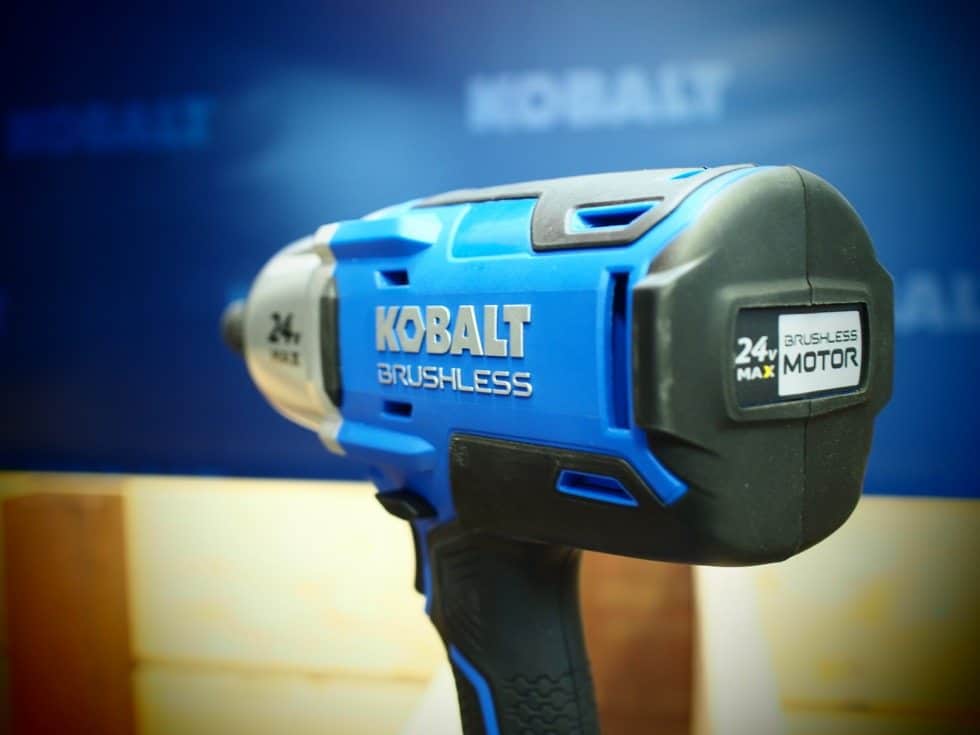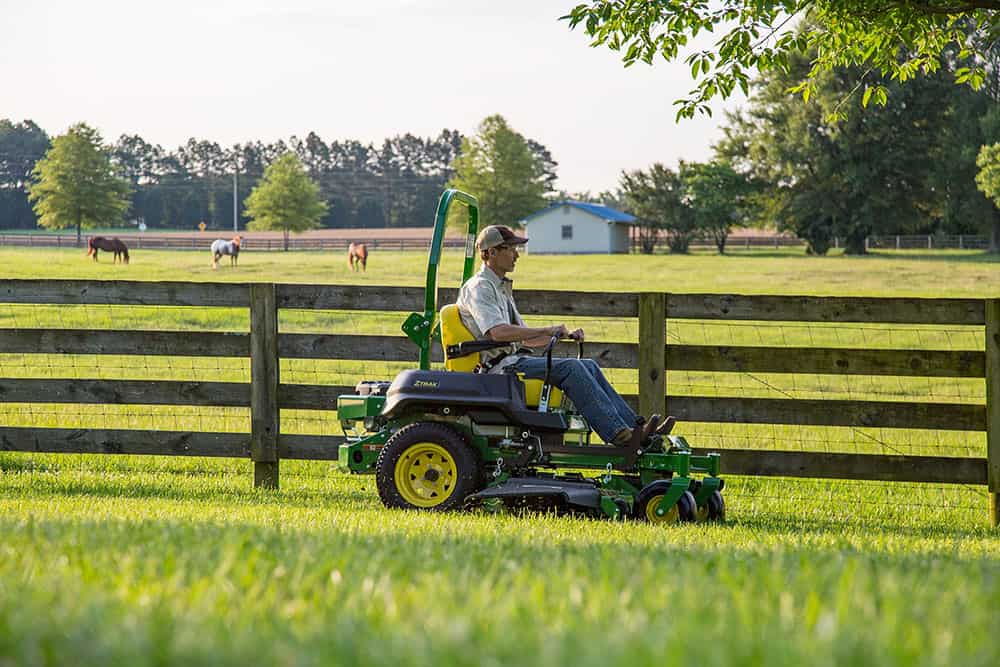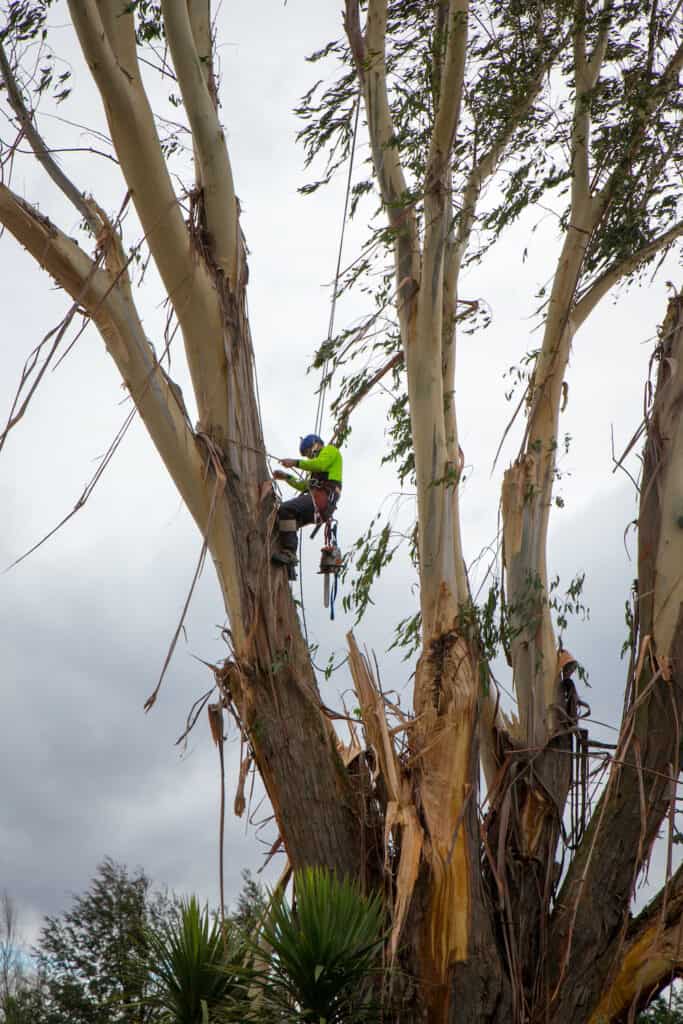
We’ve got a large yard filled with beautiful ficus, eucalyptus, privet, eugenia, and creeping fig. All of these trees are fast-growing and require regular tree trimming and topping. Here’s how we manage our trees to maintain their health and beauty.
When we moved into our home 3 years ago, we underestimated the time and money involved with maintaining our trees. We’ve never hard a yard this lush or this large and the previous homeowners did nothing to keep the trees trimmed back, which has led to overgrown ficus roots, leaf debris, and overgrown branches.
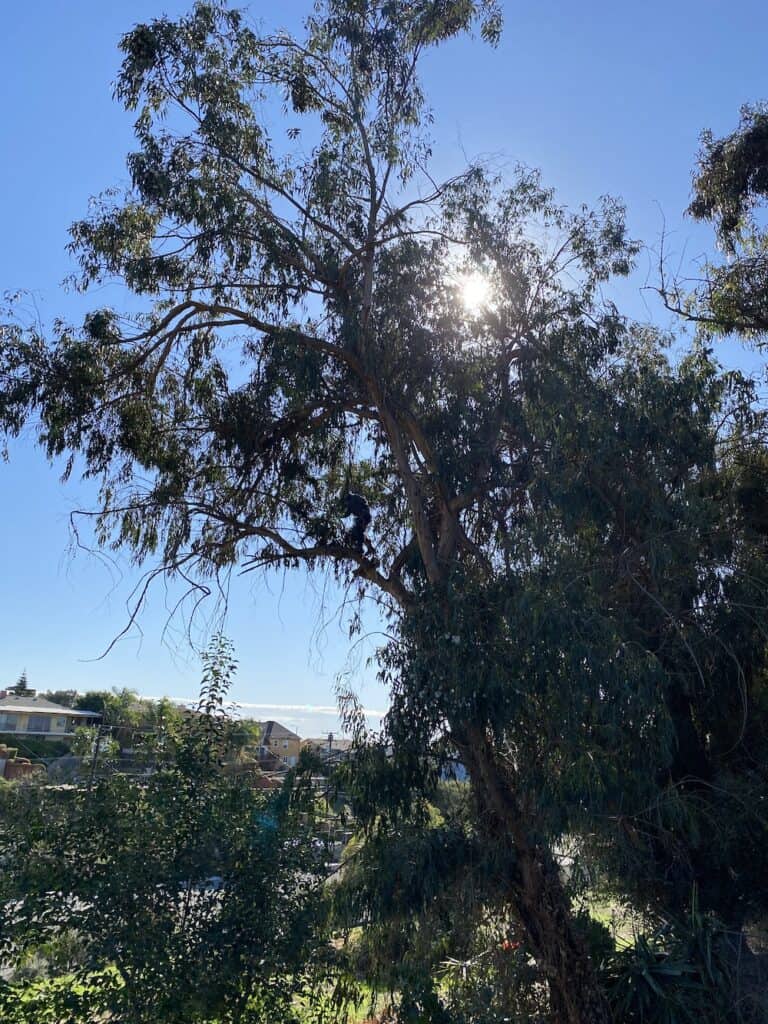
A new neighbor wants to trim a section of our eucalyptus that we love, as he’s concerned that sections of it could fall and be dangerous. We want to honor his concerns, and his request has spurred us to evaluate the needs of all of our trees. Here are the steps and tips we have taken to trim and top our trees.
How to Find a Tree Service Near Me

We do a lot of our own tree trimming, but climbing a 50-foot eucalyptus with a chainsaw is beyond our abilities (and desires). There are a ton of tree service companies in the Los Angeles area, and we used Thumbtack and Yelp to find our crew.
We had good success using Thumbtack to find a company to install our new appliances, so it was the first place we looked for a tree trimming service. Thumbtack is free and you message the company to request a quote or a site visit.
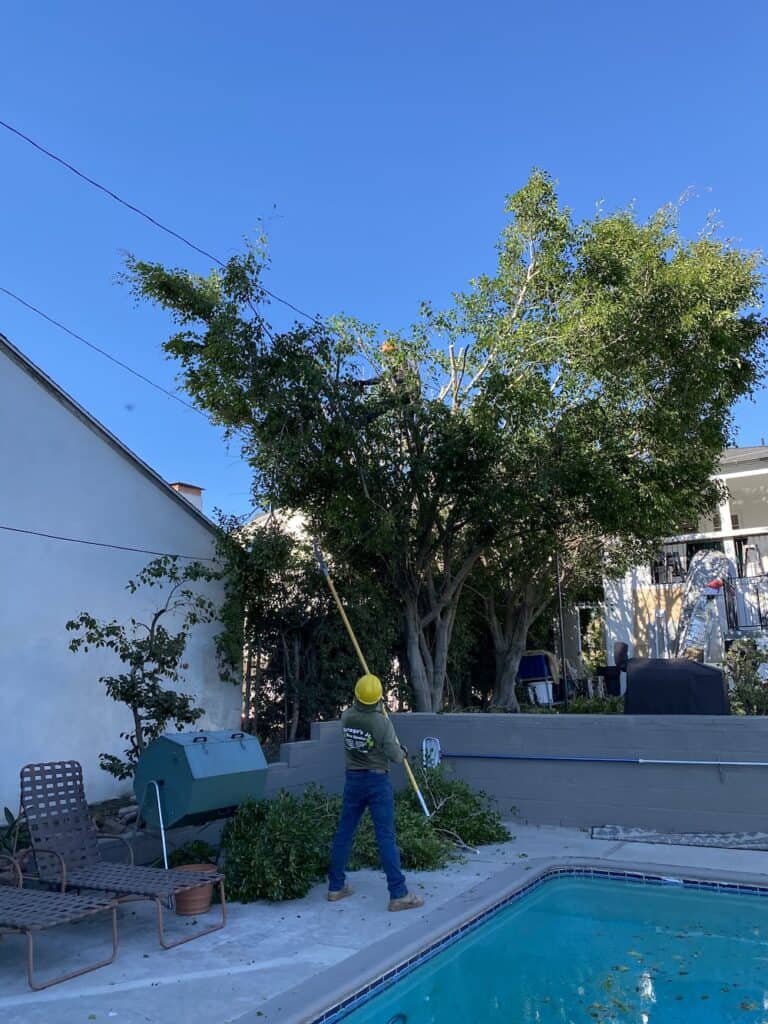
We received quotes from two companies and we chose Ortega Jr. Tree services as they were not only half the price of their competitor, they indicated that they could finish the job in a day.
This company checked out on Yelp, so we hired them. A week later they showed up with a crew of five, including the owner, and a large truck filled with tools and towing a wood chipper.
Not only did we need these guys to trim our trees, we also hired them for the unenviable task of removing a large section of ivy that had overgrown an old fence near the back of our property. This ivy had climbed over dead trees and intertwined within a fence, making it even more difficult to remove.
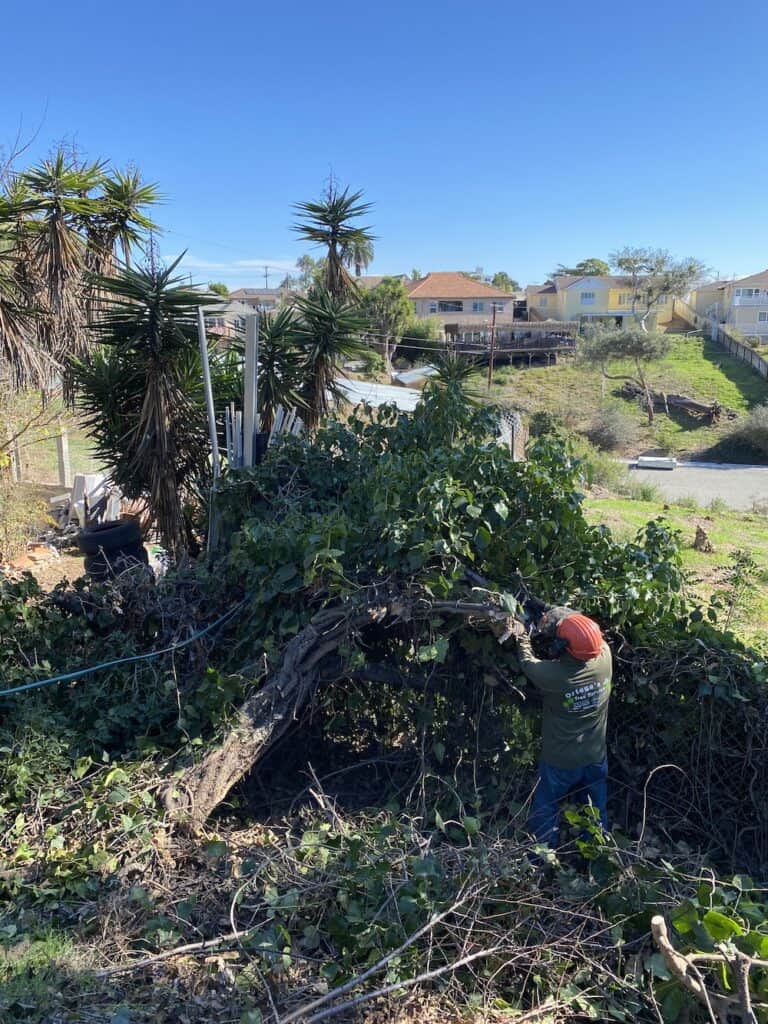
Prepare Your Yard for Tree Trimming
When the tree trimmers show up they are ready to get started. Make the most of their time by preparing your yard before they arrive.
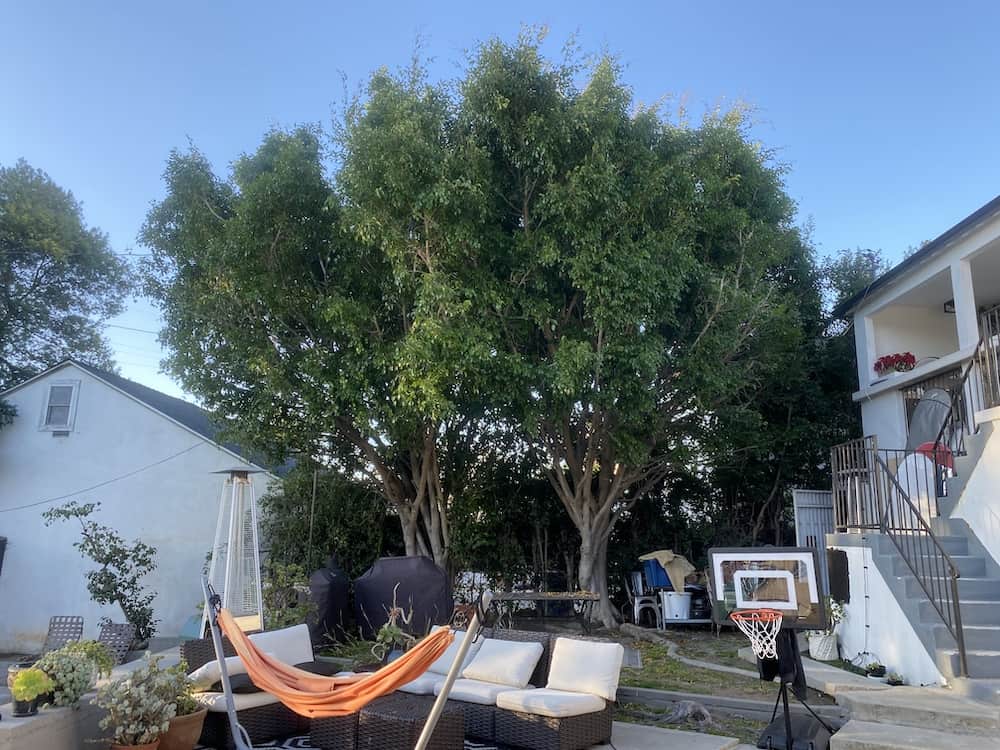
The main thing you need to do is provide easy access to your trees and remove any patio furniture, BBQ grills, hanging lights, and anything else that is underneath the canopy of a tree and could be damaged by falling tree branches.
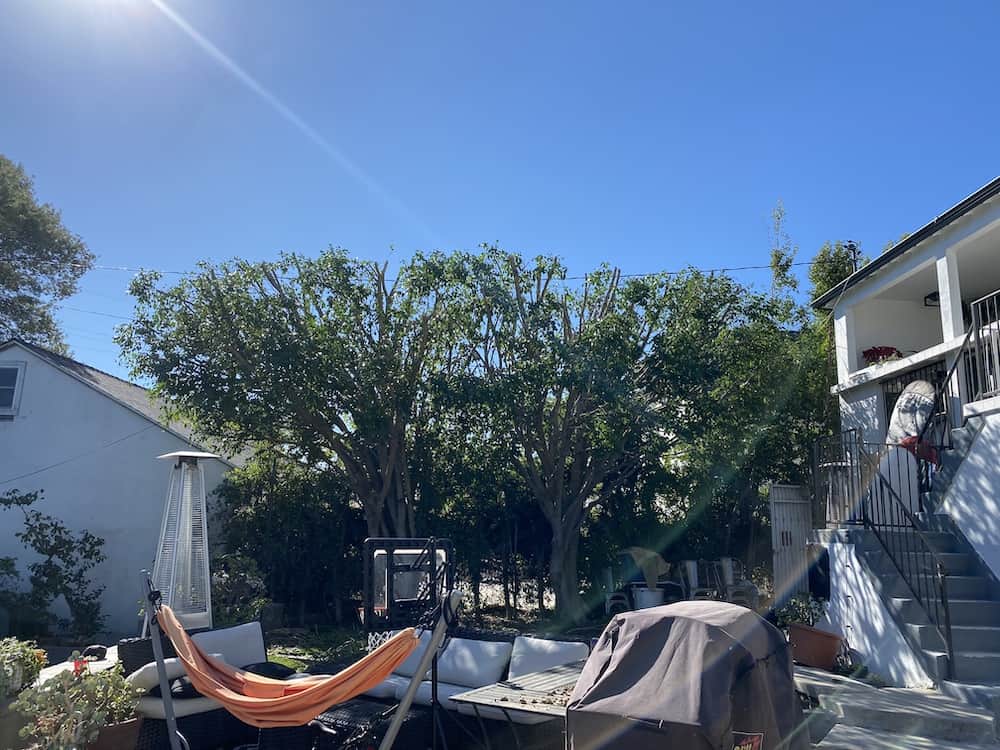
Clearing the space under a tree also makes it easier for trimmers to clean up and remove leaves and branches.
When a crew finishes the job they will also use a blower to do a final cleanup. This can create a real mess, so make sure your windows and doors are closed. Once the tree trimmers leave you can use a sprayer and wash down everything as there will likely be sawdust and debris covering everything.
A wood chipper also creates a ton of dust. Our car was covered in dust as it sat next to their truck in the driveway. Our neighbors also had to deal with sound and mess, so we made sure to inform them before the trimming started and even offered to pay for a car wash for them to maintain good relations.
What Tools The Pros Use to Trim Trees
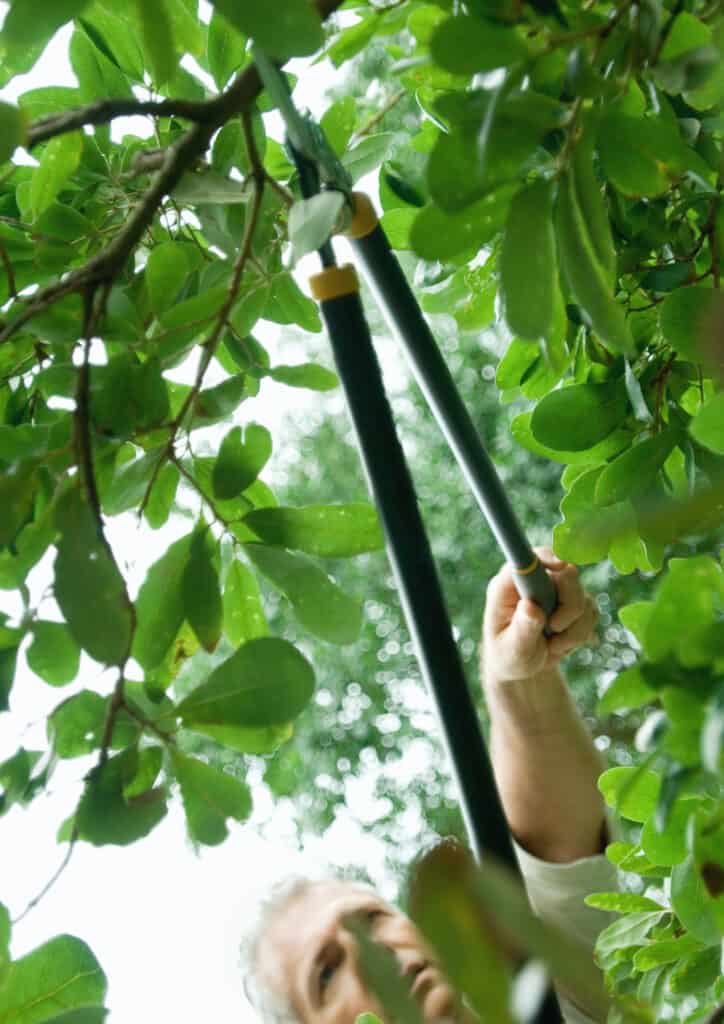
Our tree trimming crew used a gas-powered Stihl chainsaw as their primary tool for tree trimming and topping. The sheer power was necessary to quickly cut the branches, but as expected it was loud and smelly.
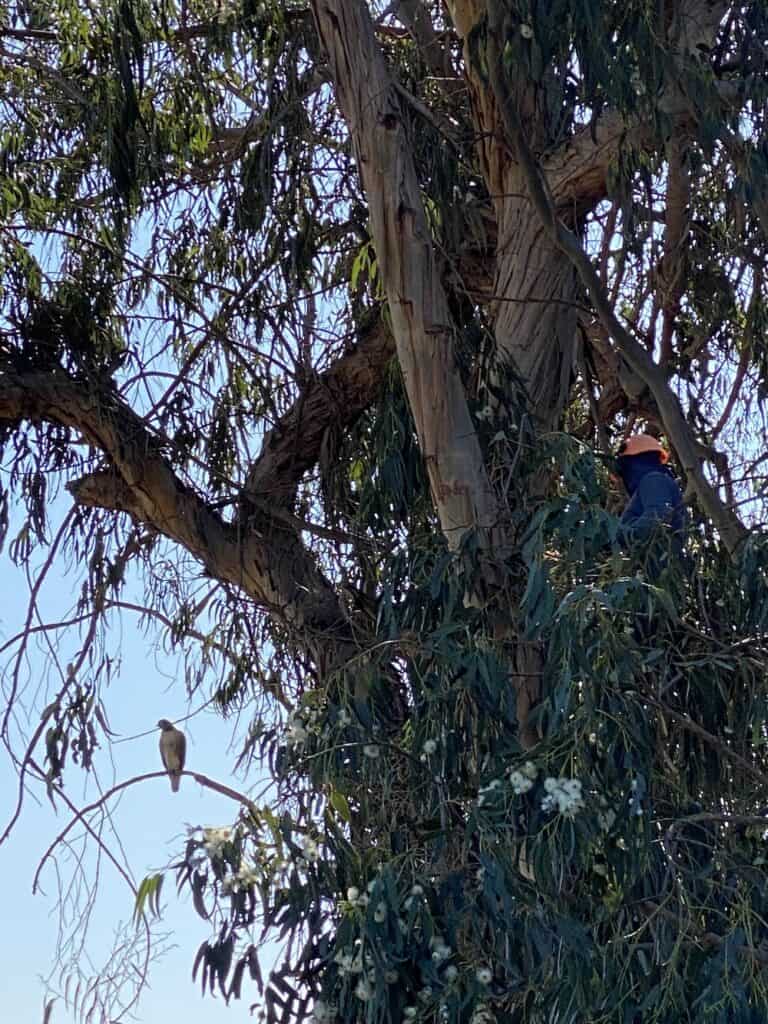
Our property is not large enough for a lift to access, so they literally used ropes to assist in climbing the trees and pulled their chainsaws up from the ground. I experienced climbing a tree myself at the Stihl headquarters and it is tough work!
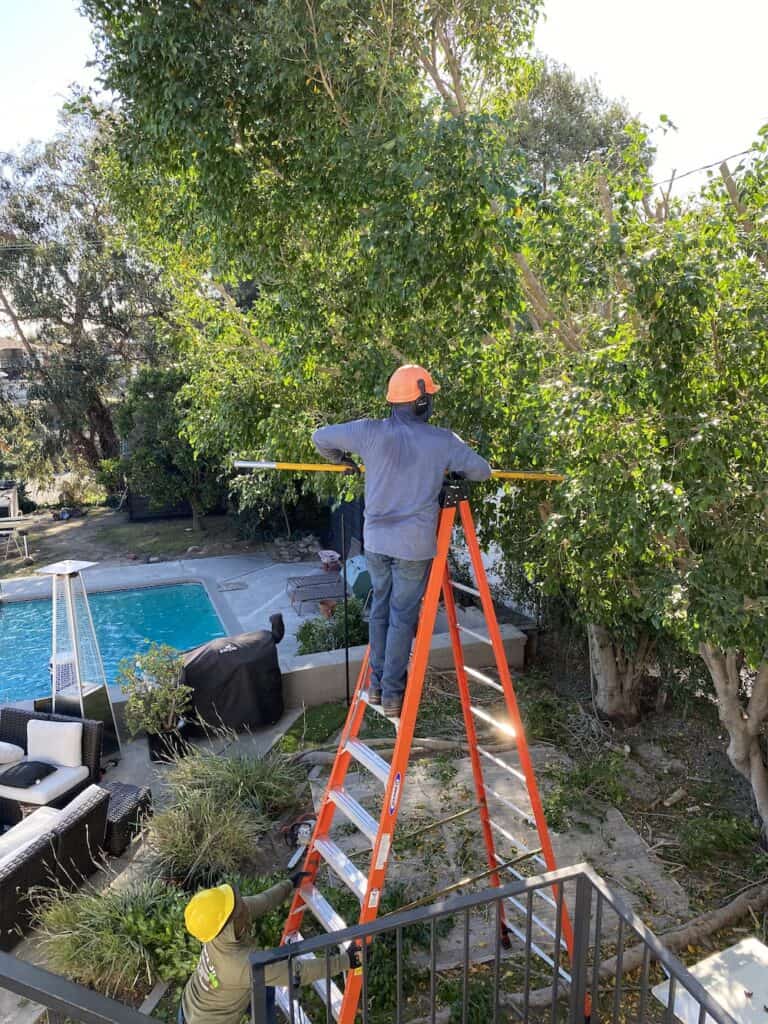
They also used a manual pole saw and loppers, both of which we use as well.
A Stihl gas backpack blower was the final tool they used to clean the yard and debris in street and front yard.
How to Trim Your Own Trees
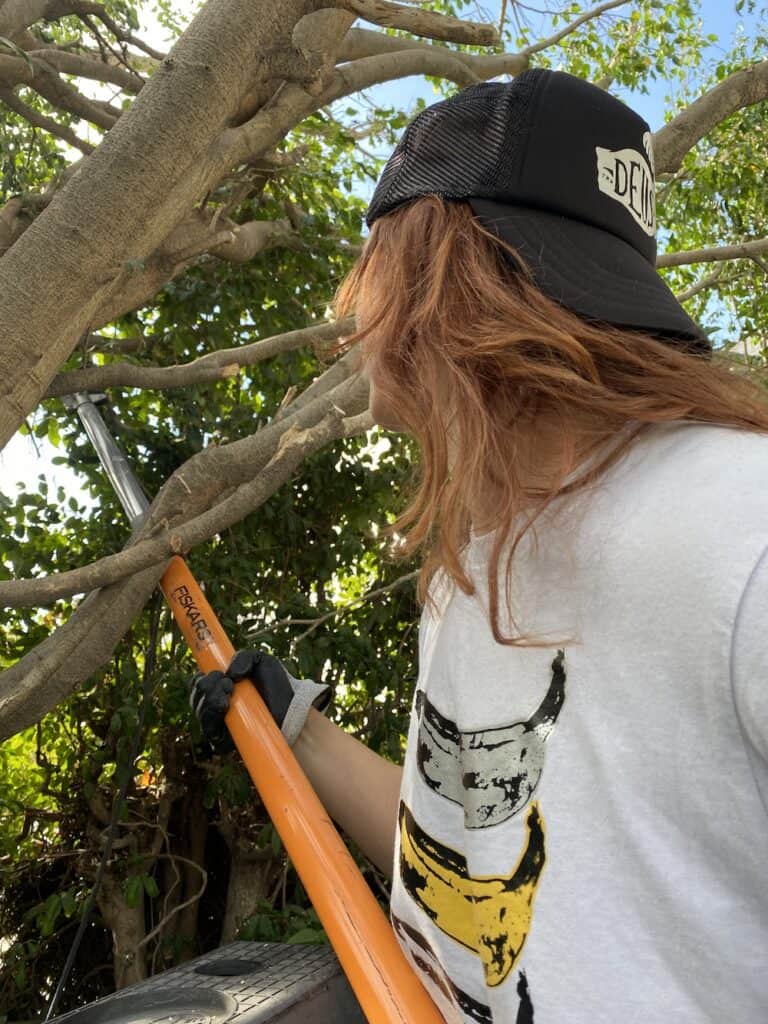
Calling in the tree trimming pros was necessary to trim and top the eucalyptus and ficus, and now that we’ve got a baseline for these trees it will be easier for us to maintain them. There is only so much we could safely reach from our 8-foot ladder.
We lean heavily on our Fiskars pole saw, but we usually remove the saw blade and use it mostly as a pruner. When we need to cut very large branches we can pop the saw attachment back on.
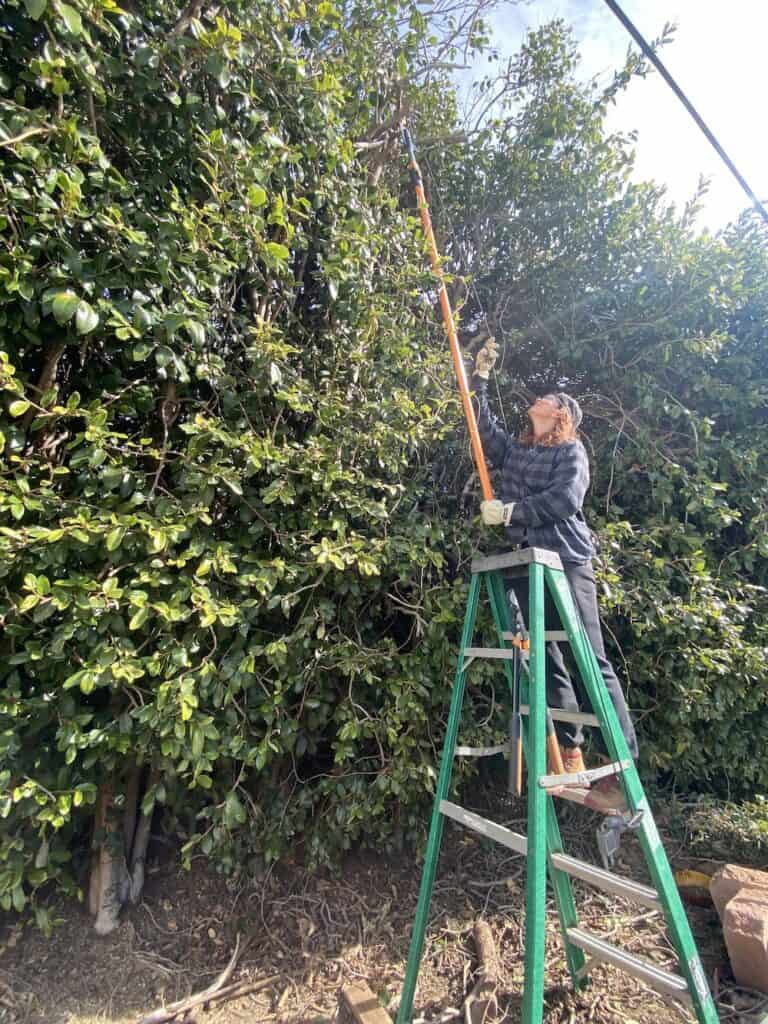
With our trees now fully trimmed back, our own tree trimming efforts will be more noticeable. The roots of our two ficus have truly become a problem as they are a tripping hazard and we’re concerned they will eventually impact our pool, foundation, and our neighbors yard.
Because of this, our ficus have gained most of our attention. We even considered cutting them down to stop the root growth, but they provide a ton of shade and privacy, so they would be sorely missed.
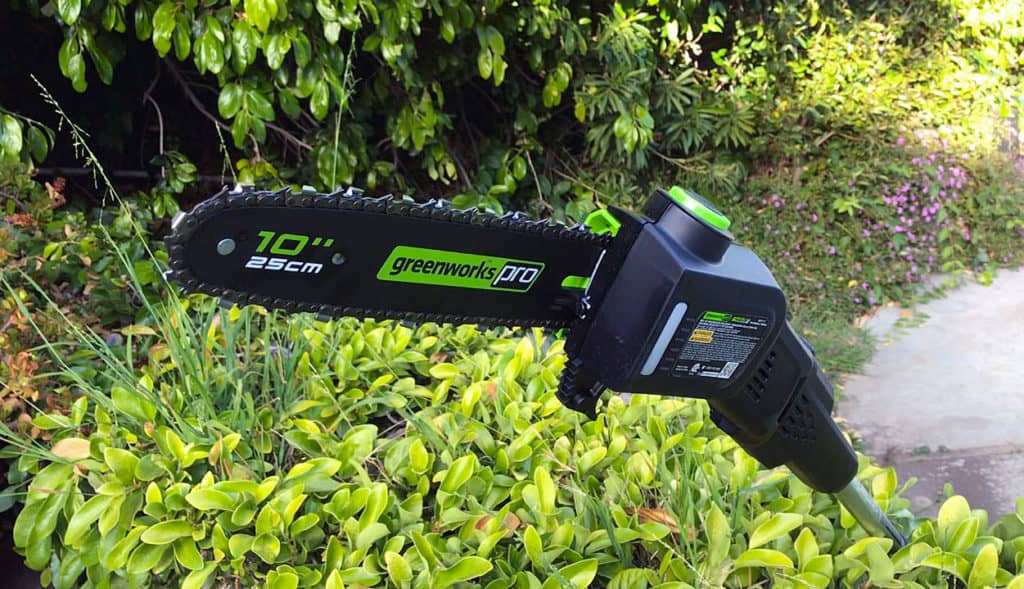
We’re hoping our solution of topping them and cutting them way back, should inhibit the root growth. To keep our ficus trimmed back we are using a Fiskar manual pole saw and pruner, and our Greenworks pole saw. Both of these tools will allow us to reach almost near the top of the ficus now that it has been topped, and with regular maintenance our roots should remain in check.
We also use a Fiskars lopper extensively on every tree in our yard. It quickly helps us remove dead branches and allows us to easily shape our trees. Compared to a handheld pruner, a lopper provides us with enough leverage to make clean cuts on our ficus, eugenia and orange trees.

To maintain our creeping fig we also use the loppers as well as our Greenworks hedge trimmer. The hedge trimmer not only pushes back the leaf growth, but it’s strong enough to trim the small branches. Our favorite feature of the Greenworks hedge trimmer is that it articulates so you can get the best angle and save your wrists.
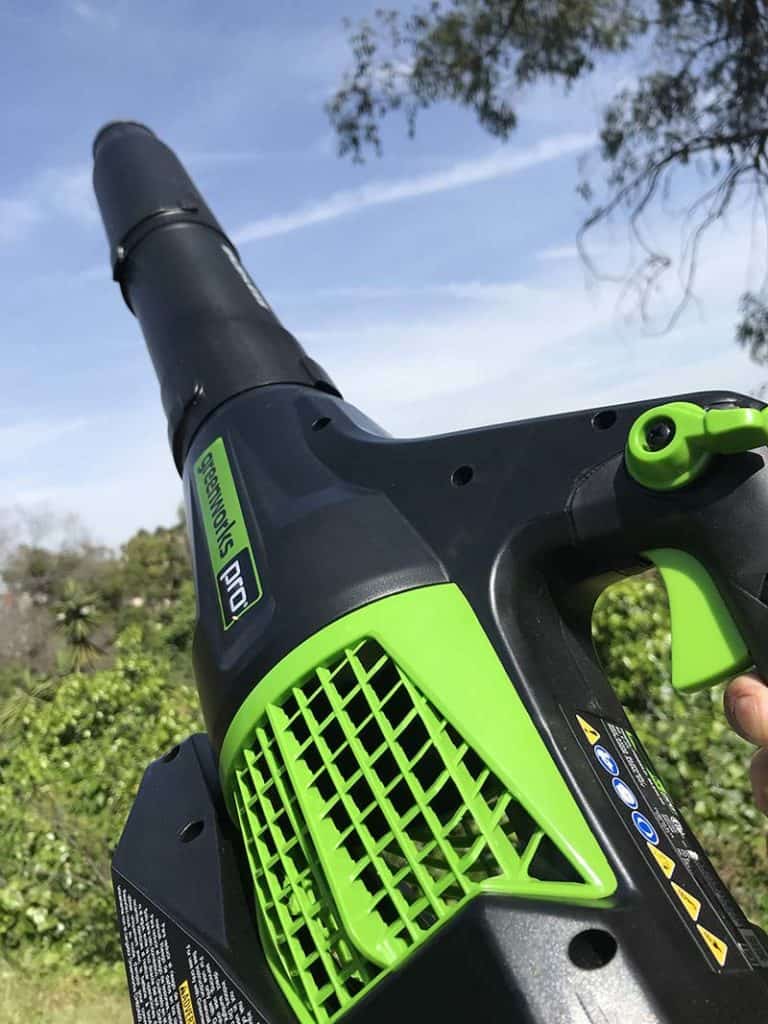
The final tool we need to trim our trees is a Greenworks leaf blower to remove the debris. A backpack blower is overkill for our yard, but the Greenworks blower is still strong enough to clear the last bit of leaves and branches and it allows us to quickly sweep them up using our Quiklid. The Greenworks blower also has plenty of battery power with a 2.0 battery that we only need to charge once a month.

Since we don’t have a wood chipper, we use our chainsaw to cut down large branches so they can fit into our yard refuse bin. Once a week we fill our bin, but this is slow going, so we usually hire day laborers to haul our yard debris out all at once.
Tree Trimming Schedule
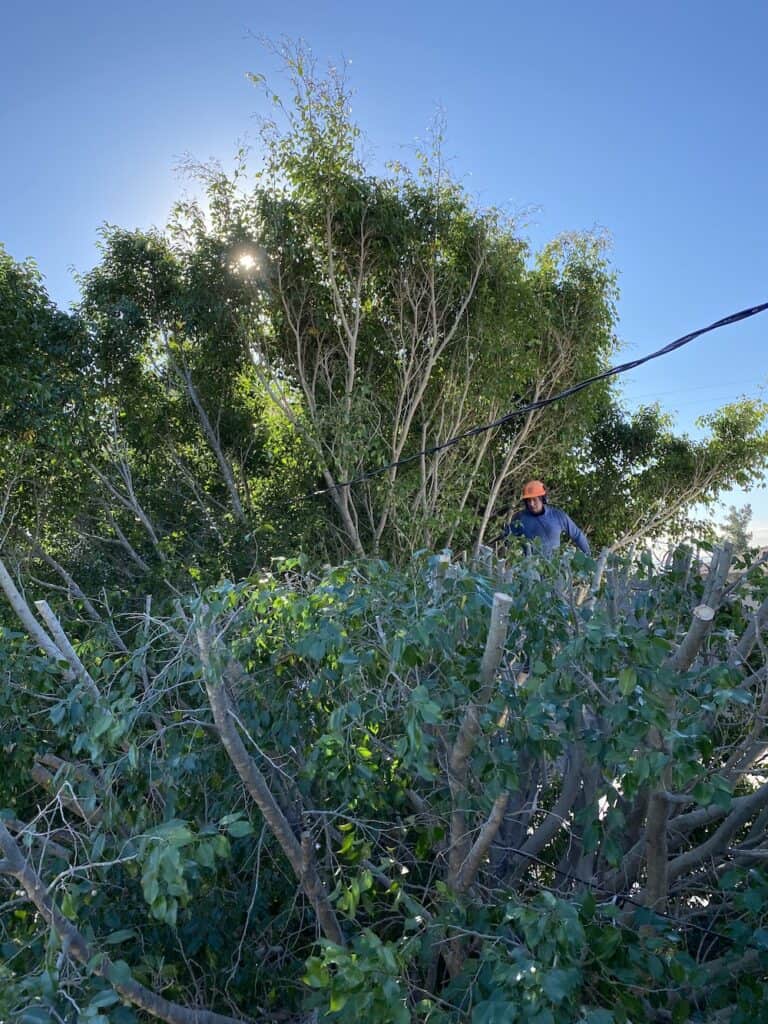
Now that we’ve got our “jungle” back under control, we work our tree trimming schedule into our weekly watering schedule. A little trimming each week will keep our trees and hedges under control, and allow us to dispose of the yard waste all at once.
Falling behind on tree maintenance is what prevents a lot of homeowners from doing anything in the first place as it can seem like such a daunting job. But, we believe it was money well spent to hire a tree service to help get our yard under control, and now that we have the right tools we can maintain it throughout the year.
We may have to bring in the pros every couple of years, but now their job will also be much easier and cost us less.
Better Tree Health
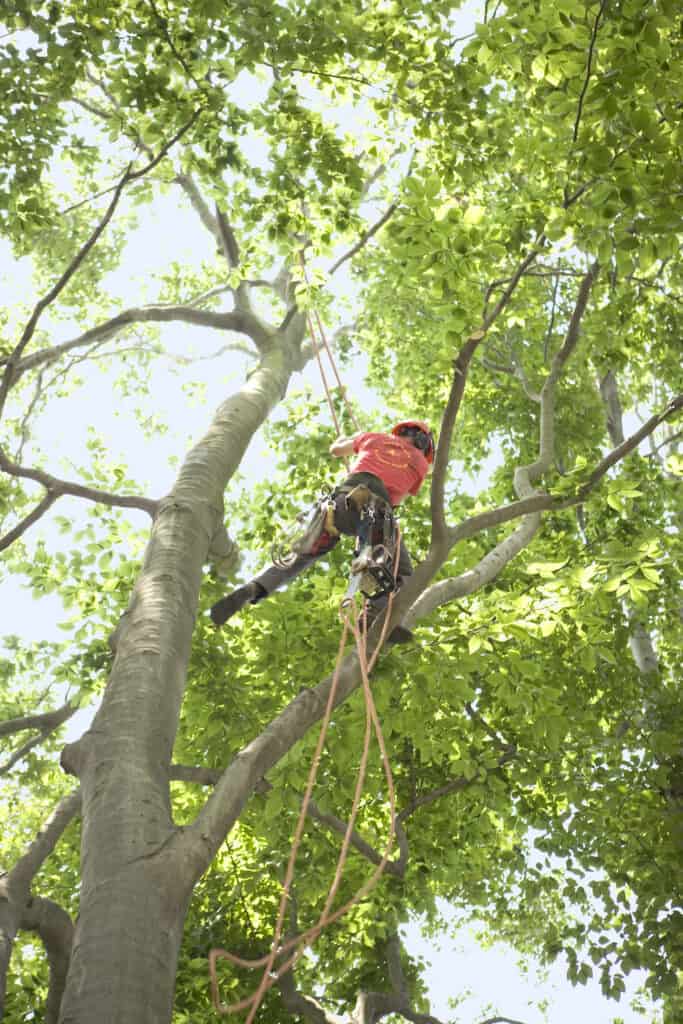
Next to root and growth management, the health of our trees is our top priority. By removing the dead branches, a tree can really flourish as it is no longer weighted down and expending needless energy. Removing dead branches also inhibits the tree rot and insect infestation.
A healthy tree can protect itself better and provide a more lush and full canopy.
The final job needed to sort our yard is the removal of about four tree stumps, so we’ve asked our tree trimming service to return at a later date. We will share how they did this as well.
As we continue to maintain our trees and yard, we will add more tips to this article that can help you do the same.


